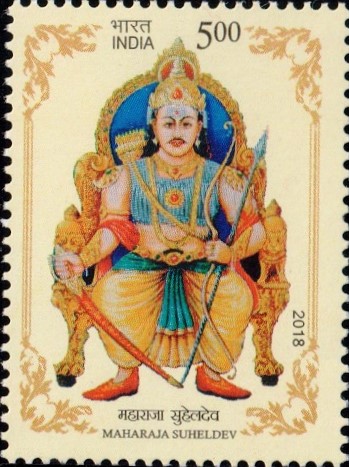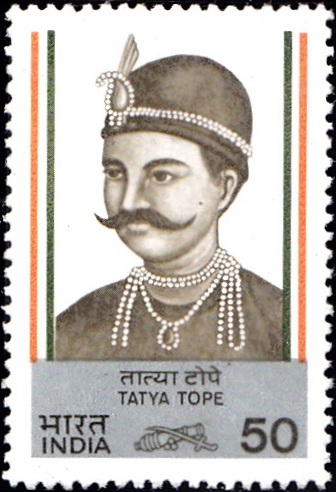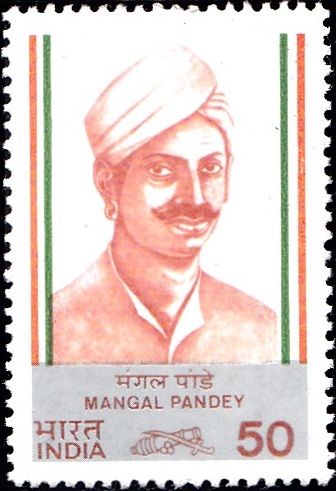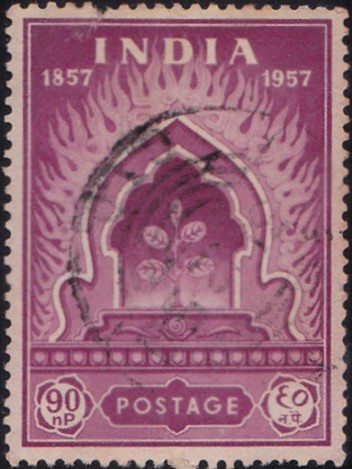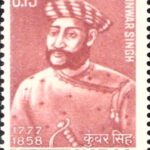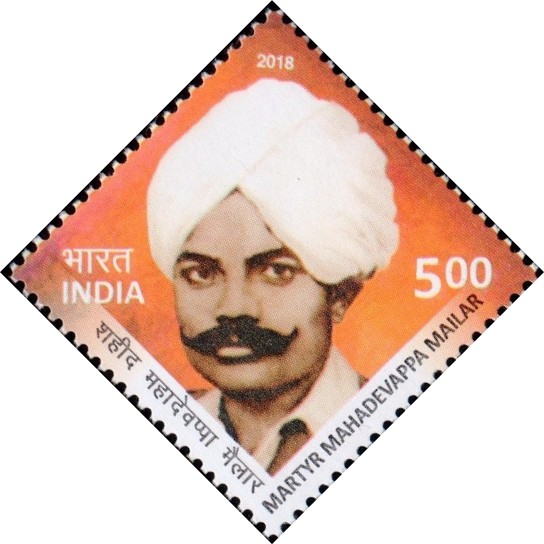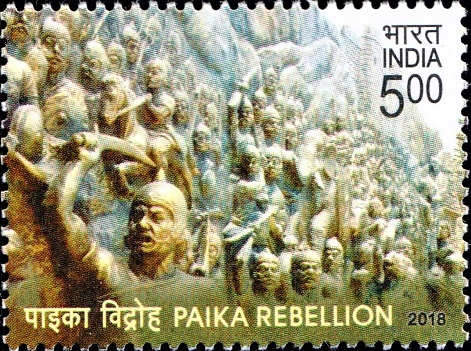
Paika Rebellion
A commemorative postage stamp on the Paika Mutiny (Paika Bidroha), an armed rebellion against the British East India Company’s rule in Odisha in 1817 :
 Issued by India
Issued by India
Issued on Dec 24, 2018
Issued for : According to some historians the rebellion of 1817 was better organized than many such early movements in other areas of India. Paika Rebellion completed its two hundred years on 20 July, 2017. The Paika rebellion is a noteworthy incident in the history of India’s struggle for Independence. In order to commemorate this important event in Indian history, the Department of Posts is pleased to release a Commemorative Postage Stamp on the Paika Rebellion.
Credits :
Stamps : Late Sh. Subir Das
FDC/Brochure/Cancellation Cachet : Smt. Alka Sharma
Type : Stamp, Mint Condition
Colour : Multi Colour
Denomination : 500 Paise
Stamps Printed : 606450
Printing Process : Wet Offset
Printer : India Security Press, Nashik
About :
- Paika Rebellion popularly known as “Paika Bidroha” was a well organized struggle against the oppressive rule of British East India Company. Paikas were essentially the peasant militias of the Gajapati rulers of Odisha who rendered military service to the king during times of war while taking up cultivation during times of peace. Immediately after the advent of company rule in Odisha, discontent spread rapidly amongst the people of Odisha. The British were fiddling with the revenue system, bringing about land reforms that increased taxes on the land owned by the local peasants and the natives. The money lenders took advantage of this creating huge debts for the common man. In fact, the socio economic fabric of the peasants of Odisha was disturbed completely. This irked the rulers of Khurda, who protested. Khurda, which is twenty-five kilometres from Bhubaneswar, was the centre of the Paika Rebellion.
- The Paika Bidroha was an armed revolt of the traditional Paika militia in the state of Khurda in Odisha in the year 1817. It began in the month of March and sporadically and intermittently continued up to 1836 after the formal suppression of the rebellion. It was led by Jagabandhu Bidyadhar Mahapatra, who was traditionally a Buxi, military commander, under the king of Khurda. It had nearly swept away the British in Khurda, Pipili, Banapur and Puri for months before being crushed by the forces of East India Company. It was not a purely military revolt of disgruntled or demobilized soldiers but had a component that gave it a character of a civil uprising in which the Khurdapaikas, tribesmen, peasants, the traditional rent collectors and people engaged in native salt manufacturing, an industry tottering due to the monopoly of salt trade by the Company, all had joined. The uprising was against the unjust Company rule and set a strong tradition of defiance.
- The revolt began in March, 1817, when the Kondhs from Ghumsar and the Paikas of Khurda jointly raided Banapur and attacked everything that symbolized the new Company’s establishment there. Even the mahajans and sahukars advancing loan to the peasants with the sole motive of appropriating their land and other valuable materials were not spared. A 400 strong contingent of Kondh tribesmen from Ghumsar crossed into Khurda; the Dalabeheras and Paikas joined them. The rebels attacked the police station and other Government buildings at Banapur. The Salt Agent of the southern division, narrowly escaped from this popular fury. However, his boat on the Chilika Lake was captured and plundered. The rebels then marched on to Khurda. More crowds joined them on the way, because of their success at Banapur. The officials did not dare to offer any resistance. All the official buildings were burnt. The Magistrate of Cuttack moved to Khurda to control the rebellion. By the beginning of April 1817, the number of rebels had swelled to about 3000. They constantly attacked the Government forces thereby forcing the Magistrate to retreat to Cuttack on 4 April, 1817.
- The rebels under the leadership of the Buxi also reached Puri and requested Mukunda Deva II, the former king of Khurda, confined to Puri, to join them and to lead the revolt. The pilgrim city, Puri, came under the control of the rebels. The covert support of the prince in Puri gave strength and popular legitimacy to them. The Magistrate of Cuttack recommended that one the Company re-gained the control over this most important pilgrim city, the prince should be removed to Cuttack, the Company’s headquarter in Odisha. A reward of Rs. 5000 was also announced on the head of the rebel sirdars on 12 April, 1817 and martial law was imposed in the entire Khurda territory.
- On 12 April, 1817 the rebels burnt the Government cutchery and several other public buildings in Puri. In the resultant clash, 15 rebels were killed and many more were wounded. However, very soon more people joined the rebels. The priests of the temple openly proclaimed the fall of British rule and the restoration of the king’s rule in Odisha. This created a mass upsurge forcing the European officials stationed in Puri to leave for Cuttack, where they reached on 18 April, 1817.
- By the second half of April, 1817 martial law had been proclaimed in Puri, Pipili, Lembai, Kotdesh, Khurda and Banapur. All communications between Cuttack and southern part of the province were completely cut off. By the end of April, 1817, the British swung into action in repressive mode. An armed British contingent returned to Puri and took the prince to Cuttack as their captive. There were attempts to rescue the prince on the way. Some 2500 rebels encountered the British forces escorting the prince. The British used modern arms and scared the mass of crowd whereas the rebels had only traditional arms, which were no match to the British arms. On 11 May, 1817 the prince reached Cuttack as a Company prisoner and was placed in close confinement in the Barabati fort till his death on 30 November, 1817. Although by the end of May, 1817, the revolt had been effectively suppressed, the resistance continued to prevail thereafter in pockets.
- Text : Ms. Shaili Dhagat and as per information received from the proponent.


